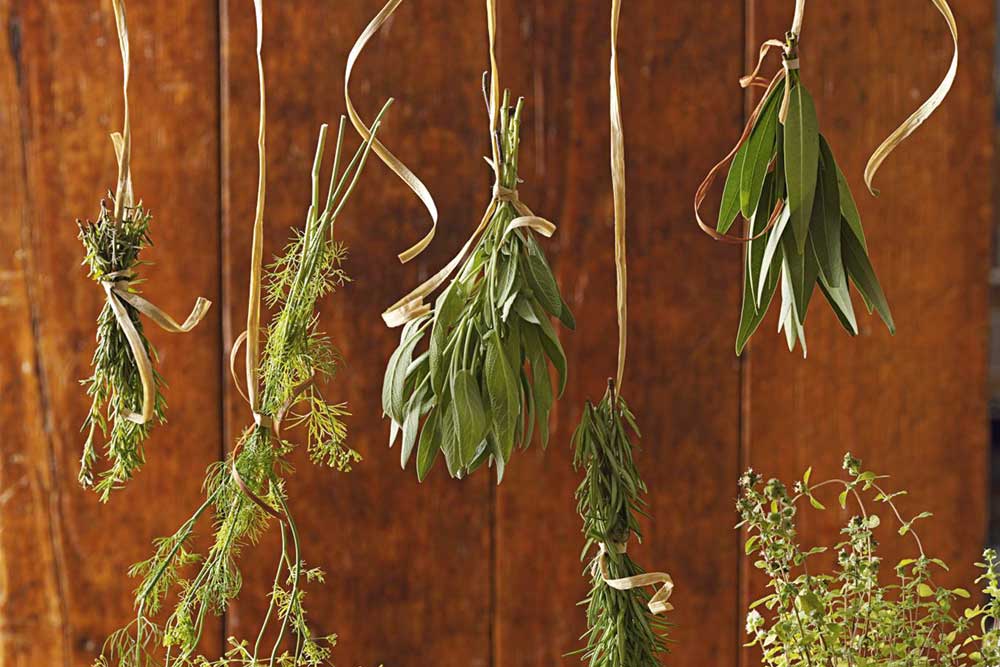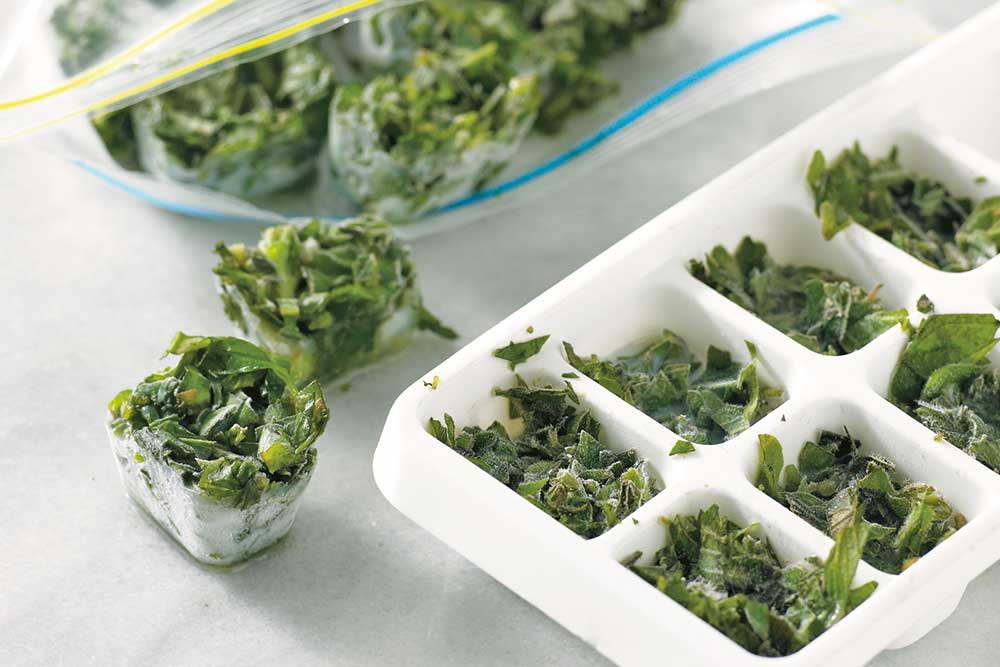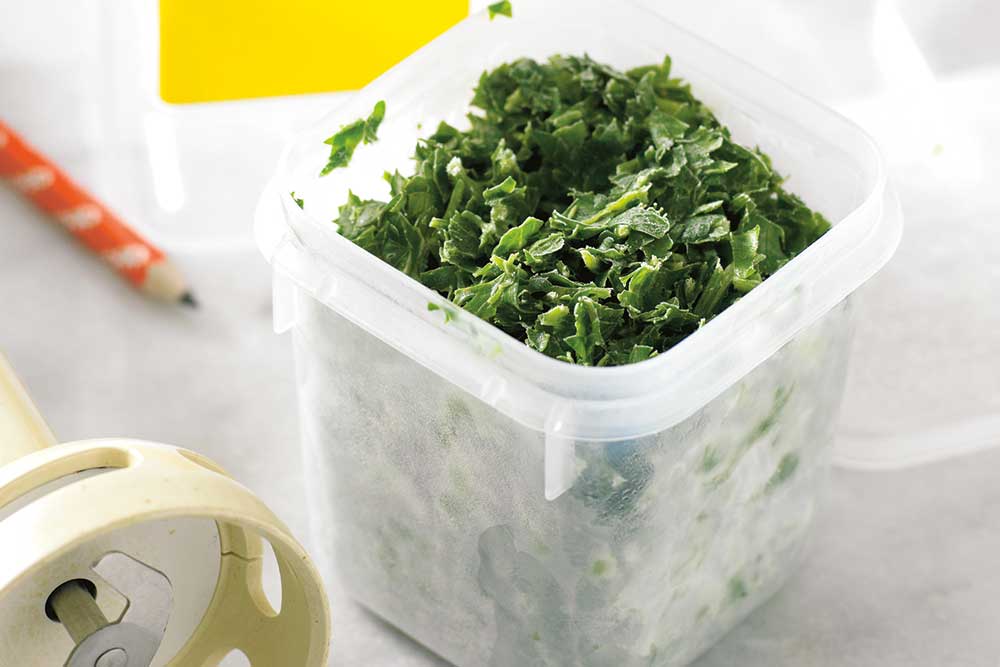
At this time of the year, herb beds are bursting with more produce than can be used. But instead of wasting surplus summer herbs, harvest the whole lot.
Pick herbs before the flowers develop on warm, dry mornings after the dew has evaporated. Use as much as you can fresh and preserve the rest for later.
It’s easy to do and herbs taste better if you grow and preserve them yourself without chemical additives.
There are several methods to choose from and the one you use depends on how you plan to cook with the herbs over winter.
You can freeze, dry or infuse herbs in vinegar and oil for use in recipes and to serve with meals.
Drying
Effective herb drying relies more on abundant dry, fresh air than heat. A well-ventilated place out of direct sunlight is ideal. In humid areas the process may be slower, and mould can be a problem.
If air-dried herbs get mouldy, use a small dehydrator instead. Strip large-leaved herbs, such as sage and mint, from their stalks, discarding any damaged leaves.
Leave small, feathery herbs like dill and fennel on the stalks until dry. Tarragon, bay, mint, lemon balm, lavender, rosemary and small-leaved herbs such as thyme take well to air-drying, so are ideal for beginners.
Crumble dried herbs with your fingers, discarding the hard leaf stalks and midribs, and store in small airtight containers. If you use clear glass jars, store them in a dark place so the herbs don’t lose their colour.
Drying herbs concentrates the flavours, so you don’t need to use as much when you’re cooking.
A good rule of thumb is to substitute one teaspoon of dried herbs for one tablespoon of fresh.

Herb-drying techniques
Here are four easy ways to dry common culinary herbs at home.
1.TIE SPRIGS in small, loose bunches, as big ones can go mouldy and develop discoloured leaves.
Hang the bunches, leaves down, wrapped loosely in thin paper bags to keep out dust and catch any falling leaves or seeds. Avoid plastic bags, as they don’t allow airflow. Allow 7-10 days for full drying, depending on leaf size and humidity. Herbs are dry when the crushed leaves sound like crisp cornflakes.
For the seeds of herbs and spices such as coriander, caraway, parsley and fennel, harvest them when the seed heads are mostly brown, cutting the stem as long as possible.
Bundle 4-5 stems, cover the heads with a paper bag and hang upside down.
2. MAKE A RACK by stretching muslin, cheesecloth or netting over a timber frame, then secure. Space individual sprigs or leaves on the rack and put it in a warm, airy spot out of direct sun.
Turn the sprigs often so they dry evenly, which should take 2-3 days.
3. STRIP THE LEAVES of herbs such as sage, mint, rosemary and parsley from their stalks. Spread them on a tray covered in muslin and put in an oven set to the lowest temperature, as high heat will diminish fragrant essential oils.
Leave the door ajar so moisture can escape and turn the leaves after 30 minutes so they dry evenly, which takes about an hour. Turn off the heat and leave them in the oven until cool.
4. USE THE MICROWAVE for drying small quantities of herbs. Separate the leaves from the stems, rinse if necessary and allow to air-dry.
Put the leaves on paper towel in a single layer on a microwave-safe plate. Top with paper towel and microwave on high for one minute.
Watch the herbs and stop the microwave if you smell them burning. If needed, continue heating the herbs in 30-second bursts until dry.
Freezing
A good way to retain the colour and flavour of herbs is to freeze them.
Freezing is a particularly suitable storage method for culinary herbs with very fine leaves or a very high moisture content, and for those that lose their taste when dried.
Good candidates for freezing include fennel and dill, tarragon, chives, parsley, chervil and basil.
FOR SMALL QUANTITIES of fresh herbs or to add to wet dishes, such as soups, casseroles and risottos, freeze them in ice-cube trays.
Rinse the herbs under cold water, then finely chop them. Put one tablespoon into each segment of the ice-cube tray, add a little water, then place the tray in the freezer.
When the cubes are frozen, put them in a labelled plastic bag or container and they’ll keep for months.
FOR LARGE QUANTITIES of fresh herbs or to use in recipes that won’t benefit from the extra water from the melted ice, freeze whole bunches of herbs.
Rinse the herbs under cold water, pat dry with paper towel and tie loosely together. Seal the bunch in a labelled plastic bag and freeze.
The frozen herbs will become quite brittle, so scrunch the bag with your hand to break the leaves into pieces before using them.


Chop summer herbs and freeze in a small container for winter use

